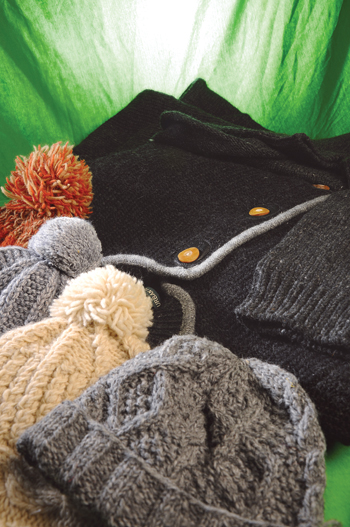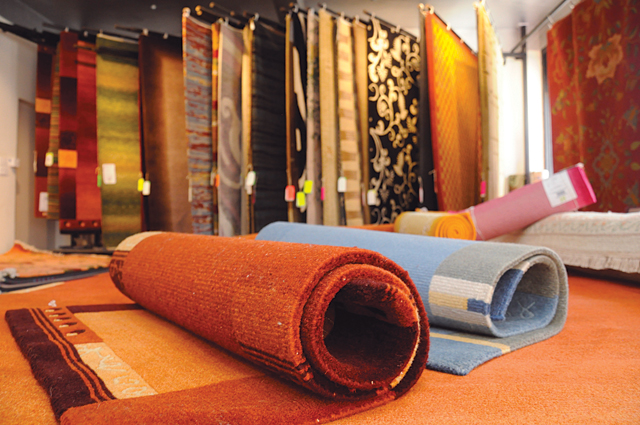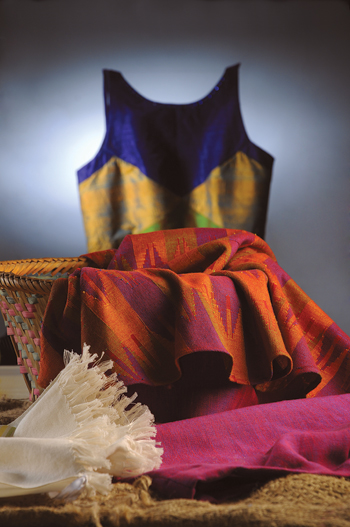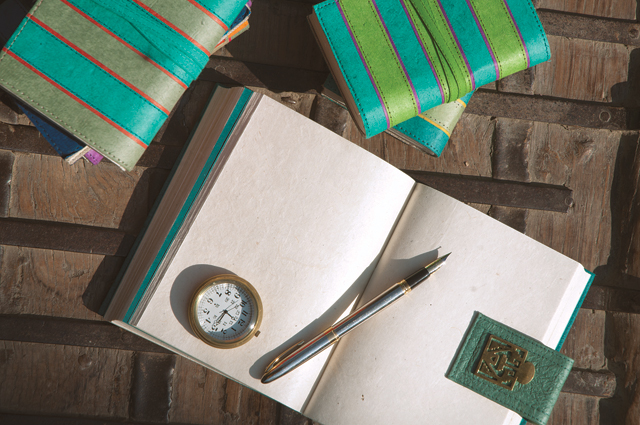Nepal’s traditional crafts and practices, more than ever, requires a renewed sense of ownership. With initiatives and businesses taking on free market policies through innovation and adaptation, we, the consumers, need to be reoriented of the values of patronizing Nepali products; especially those meaningful commodities based on our cultural and indigenous heritage.

Societal creation, whether tangible or intangible, springs from shared aspects of lives lived and beliefs held. Culture, or this accumulated trove of knowledge that is synthesized over the course of history, is essentially a navigable account of learned observations. A foundation befitting a particular setting and its resources that could be developed for future gains. In ways, culture is reflective of life where only the utilitarian or valued details survive.
Unfortunately, around the world, the formidability of traditions and traditional knowledge remains tested against modern needs and a mass consumer culture. In particular, the loss of traditional practices has been exacerbated for countries like Nepal, where, isolation first proved to be a remarkable catalyst for cultural affluence and divergence.
As the hold of a globalized world culture takes grip and permeates through everyday life even in the most remote corners of the planet, the need to reaffirm identities also gains gravity. Our unique traditional inheritance coupled with native resources and practices could afford us the appropriate means of contributing and sharing our culture with the world at large. Turning it into an economically viable industry, would then guarantee its preservation.
Since antiquity, the ‘Nepali’ brand has been cultivated through various arts and crafts around the region and abroad. The craftsmanship of Nepali artisans, its thriving cultural practices and valuable resources, though, have yet to enjoy tantamount enamor from its own people. Further, its exploits also has remained grossly limited to the very few that understand its value.
Thus to acknowledge initiatives and businesses reimagining traditional crafts and practices to better suit contemporary needs, ECS NEPAL reviews select products and initiatives that are defining new trends and a positive future for cultural produce.
 Copper creations
Copper creations
Dhukuti’s store in Kupondole, for years has been a one-stop shop for home furnishings and textiles. In those years Dhukuti has introduced many lines in many different departments that make up its three-storied treasure-trove of an outlet. But with the introduction of copper furnishings and copper-ware, Dhukuti has yet again created a new line of products, for those with rustic inclinations.
Dhukuti uses pure copper, for its extensive line which encompasses lotus bowls, tea-light holders, lampshades, tables, planters, teapots, vases and much more. All the products are hand hammered to premium quality and then embossed, engraved or cut out into beautiful patterns by artisans. The line is produced in Butwal and Palpa of Western Nepal, where traditional blacksmith communities have honed their personal skills through the generations.
The antique feel of these darkened (treated) copper products can be paired with the natural complexion of wood at one’s own discretion; alternatively Dhukuti also offers fabricated tables and wooden screens fitted copper-tops or similar embellishments respectively.As a full set, the combination of its cabinets, tables, side tables and screens can create a warm and welcoming environment.
Receptacles and lamps, available in different sizes, are another frugal way of instantly upgrading the visual appeal of the entire house. Whether storing plants or food, Dhukuti’s copper line provides the perfect décor for a minimalist statement and whole lot of class.
Dhukuti, Kupondole
Contact: 5535107
 Interjecting Nepali iconography
Interjecting Nepali iconography
There is no actual equivalent of the belt in traditional Nepali attire (the patuka comes closest) but with help of artisans, Karuna Natural Wears has added value to the simple accessory. The engraving of traditional Nepali designs done by metallurgists of Patan is anything but exaggerated. With a choice of metals including silver and brass, each paired with high quality leather, Karuna’s belts appeal to both fashion-savvy youth and professional men.
Just this year, Karuna introduced additional selections in its line of belts, which has become one of its high-valued items. What this means is that there is a world of possibility where such interjection could create value added products that make a fashion statement as well as tie in Nepal’s artisan skills.
Karuna recently opened its newest storefront just east of Durbarmarg - where its original outlet began operations in 1997. Promoting natural wears made from locally sourced fabrics, designed and made in Nepal, the company has made strides in incorporating local culture into the western apparel it sells.
Karuna Natural Wears,
Hiti Sadan, Durbar Marg
Contact: 4427282
 Silver for every occasion
Silver for every occasion
For many Nepali women, jewellery not only occupies central stage in celebrations, festivities and matrimonies, but also in the traditions of bequeathing familial history and wealth. Precious metals like gold account for many ethnic tastes and preferences in Nepal but sterling silver also has its adherents. The ostentatious Tharus for one prove the precious metal’s ability to present characteristic designs with reserved sophistication.
Working with esteemed silversmiths of Nepal, Javana’s silver products exploits the metal’s versatile potential. The outlet’s simple designs and collections cover children through young and older women, providing numerous selections of rings, arm bands, pendants, necklaces, charms, earrings and more. Besides pure silver, Javana also offers lines with decorative gem-stones, venetian/sea glass and gold compliments. Additionally, one of the outlet’s unique offerings are choices of imported soft leather bands (comes in more than 18 colors) that can be paired with silver for an accentuated presentation.
For kids, Javana offers the ‘Wildlife Collection of Nepal’ featuring silhouettes of animals like of the elephant, rhino, tiger, gecko and kingfisher as pendants and charms. These polished figurines can be worn both ways, and their versatility includes making wearers aware of conversation issues. Javana also gives away a part of its proceeds to the efforts of WWF Nepal through this particular collection.

For women, the choices range from independent pieces to sets, simple hand-hammered designs to refined motifs. The ‘Ice Berg’ set brings out the natural beauty and elegance of silver through its reticulated and unpolished ornaments. Another simplified design includes beaded set of earrings, rings and necklaces. More articulated designs can be found in the ‘Circle Crazy’ and ‘Shell’ sets that use repeated circular patterns and contoured extensions of shell like center pieces, respectively.
Javana’s sparing use of silver and options of additives definitely make silver an option for all persons and occasions.
Javana Jewellry, Baber Mahal Revisited
Contact:4215994
 Technology transplant
Technology transplant
In 1989, political disputes between Nepal and India led to the now infamous embargo that crippled Nepal’s textile industry. It was during this time that Shiva Badan Shrestha of the Nepal Knotcraft Centre (NKC) realized the country’s unhealthy dependence on imported raw materials. “Back then we produced macramé novelty items, our fibers then came from India,” recalls Shrestha, “when the embargo happened, we were left without options.” Thus began NKC and Shrestha’s personal quest to promote locally available raw materials.
In 2003, Shrestha with other experts and women entrepreneurs started the Natural Resource Development Centre (NRDC), which till date has researched and refined dozens of natural fibers native to the low lying wetlands of the Himalayas and has played a key role in launching many fiber-based enterprises in the country.
NKC also produces its own line of furnishing, baskets and related products through its Fiber Weave Nepal label. Of the many products offered, their natural furnishing has been a game changer – using raw materials such as bamboo, jute, straw, papyrus, water grass and others to create contemporary furniture. Suitable for both patio and indoor use, the line offers high-end products that have been polished

through NKC and NRDC’s collaboration to enhance traditional skills, and their experimentation of carefully cross-breeding indigenous weaving practices with new materials.
From glass-top table with bamboo legs, papyrus carpets woven in Newari-style knots, or the traditional sukul-inspired end chairs, NKC’s environmentally friendly furniture even have full sets available for purchase. A remarkable variety has been developed by the NKC, collecting patterned weaves from various indigenous and ethnic communities. Sublime and earth-toned colors are a standard, paired with the natural pigments of fibers, the furniture and its complimentary accessories emphasize the natural aura of the line.
Nepal Knotcraft Center has an outlet store in Kupondole, and its headquarters in the Industrial Zone at Lagankhel.
Nepal Knotcraft Center,
Kupondole
Contact: 5528614
Herbal products for Personal Care
With Wild Earth, you can experience the alchemy and the rituals of the Himalayan way of taking care of your body. Wild Earth is an initiative that has been sustaining traditions, plants, communities and livelihoods through the promotion of traditional Himalayan, Ayurvedic and Tibetan medicinal and healing practices.
 Handcrafted all the way, from the initial picking of herbs to blending and packaging, the products tell unique stories of Nepal. While the 500+ products in its extensive catalogue defiantly separate Wild Earth from the herd, its unrivaled range of herbal products for caring for the body that encourage touch and awaken what the Chinese call Chi, the Indians call Prana, and Tibetans call Lung – the inner river of our vitality. Wild Earth’s Jampeche Treatment Centre is yet another way of experiencing home grown treatments of massages, herbal poultices, milk, mud and salt application all based on traditional practices north of the Himalayas.
Handcrafted all the way, from the initial picking of herbs to blending and packaging, the products tell unique stories of Nepal. While the 500+ products in its extensive catalogue defiantly separate Wild Earth from the herd, its unrivaled range of herbal products for caring for the body that encourage touch and awaken what the Chinese call Chi, the Indians call Prana, and Tibetans call Lung – the inner river of our vitality. Wild Earth’s Jampeche Treatment Centre is yet another way of experiencing home grown treatments of massages, herbal poultices, milk, mud and salt application all based on traditional practices north of the Himalayas.
Wild Earth sells herbal soaps, body scrubs, mud rubs, body and massage oils, aromatic pillows and many other products that enhance well being. The products contain no artificial preservatives, colors or chemical and only use sustainably harvested plants and community trade practices. Wild Earth products are intended to feed the skin, rather than simply sit on the surface.
Contact: 4650240, Dhapasi Marg
Branding to the top
Thamel is a microcosm of the larger Nepali export industry. A stroll in the neighborhood, discloses much about the types of products that are in foreign demand. Pashmina, Thangkas, handicrafts are plentiful, felt and woolen wear also form the store front in its crowded gullies. Besides western mountain-ready brands, Nepal-made wool jackets can be purchased at a bargain year around, perfect for sub-mountainous treks.
 A closer look, though, reveals an interesting phenomenon. One individual store might sell jackets either under a foreign brand-name or without any label at all. “Companies approach us and pick out the designs they like best,” explains Sarita Maharjan, a local shop-keeper in Thamel, “then we produce these with their specified labels attached.” But none of the producers have cut out the middlemen yet. Enter Urban Forest, a wool wear company that has its own brand identity.
A closer look, though, reveals an interesting phenomenon. One individual store might sell jackets either under a foreign brand-name or without any label at all. “Companies approach us and pick out the designs they like best,” explains Sarita Maharjan, a local shop-keeper in Thamel, “then we produce these with their specified labels attached.” But none of the producers have cut out the middlemen yet. Enter Urban Forest, a wool wear company that has its own brand identity.
Urban Forest began by exporting to foreign countries through different labels before a personal brand was created to present their best selling jackets in Nepal. Their leather embossed logo is prominent on the sleeve of all their jackets, and is a reminder the direction the company decided to take. And there is no dubious business practices, on the strength alone of their designs the company is far removed from products sold in the shops of Thamel.
Urban Forest offers two kinds of jackets through their flagship store in Thamel. The single-knotted jackets are lightweight version of the two and evoke crotched patterns. The double-knotted, on the other hand, are sown in parallel lines and would be most familiar to Nepali buyers. Both extensively use wool imported from New Zealand and are soft on the skin. Additionally, options with fleece inner-lining are available on both the lines. Besides the fitted design, crafted wooden end for pull ropes, large buttons, extended neck and pronounced collars are some of the elements that give Urban Forest’s jackets a modern feel and incredible style.
Urban Forest, Sagarmatha Complex, Thamel
Contact: 4700673
Knots with contemporary designs

Weaving and looming have been a part of Nepali lifestyle and culture since documented history.Today’s burgeoning hand-woven carpet industry owes as much to Nepal’s neighbors to the north as it does to the industry’s openness to experiment and willingness to follow market trends. The arrival of refined Tibetan skills and intricate Buddhist designs were a boon to Nepal in the 60’s, but since then, several other landmarks events have been observed by its producers.
One such evolutionary moment came in the mid-90’s - “it was the nascent days of the internet, I created a free webpage and started putting up pictures of traditional carpets,” recounts Prajwol Dangol, founder of Decorative Rugs. Back then, Dangol was an auditor working for clients in the carpet industry; his interest in art, experience of the business and popularity of his online portal helped him soon change directions himself and become the foremost producer and supplier of custom-designed carpets to the West.
Decorative Rugs’ simple name had stuck, but what it did was anything short of pioneering. It brought Nepali handmade carpets to the modern world by using hand-woven quality as a selling point. “Compared to Nepalis, Westerners have a preference for darker colors and abstract designs,” explains Dangol, but unlike other producers, he doesn’t similarly claim that there exists a domestic indifference for modern carpets, selling their custom designed collection through a storefront in Lazimpat.
Decorative Rugs’carpets are offered in different cuts, construction and materials. Designs feature simple gradient of deep hues or abstract shapes and patterns. The textures vary with looped weaves or embossing created by high-piling of the knots. But a recurring and familiar design element is the representational motif of plants and flowers.
There is a particular collection which plays with the organic chemistry of vines and the occasional flower, putting on an elaborate hibiscus-impressioned design of intertwined creepers with distinguished flowers in the sheen of silk. Also in this category fall rugs that immediately evoke the feel of traditional designs, but without elements like defined frames which only limit creativity. Instead, the floral patterns have been let loose - the vines stretching towards the borders with flowers symmetrically aligning the composition to create an illusion of space and welcoming visual atmosphere.
Decorative Rugs, Lazimpat
Contact: 4428439
High-end lokta products
Nepali lokta paper has been long known for its longevity and natural resistance to insects. For these qualities it has been exclusively used for official, legal and religious documents in the country for centuries. Additionally, varying combinations of weights and consistency of the Daphne paper have helped bring out a range of products for ‘general’ use as well.
Increasing exports of the paper in recent decades has garnered international recognition. However, to an extent, the industry suffers from an inability to market the products as high-end even if the quality begs such labels.
Designer Marina Vaptzarov began her foray into the promotion of handmade Nepali Daphne products in the early 90’s. She believes that artisans and their crafts present a reflection on the vibrancy of time and culture. As for her interest in lokta, she explains, “Paper is a basic thing - one usually pays attention to what is written over it rather than the paper itself.”
Marina Vaptzarov’s showroom Paper Moon offers hand-stitched journals and diaries in options of leather, fabric, or paper covers, lamp shades inspired by Thangka designs, dyed artisan paper and more. On November 15, the label, which has been known as Marina Paper, was re-launched under founder/designer’s namesake, Marina Vaptzarov, with a line of high-end products. This change signifies one of her biggest motivations in promoting handmade products of Nepal, “In the west there is a habit of expecting products from the east to be cheap,” says Vaptzarov, “but I am convinced that we can produce high-end products in Nepal, east or west is irrelevant.”
Paper Moon will continue selling their present collection, but under the sub heading of ‘Himalaya’, while the high-end designs will be sold with an individual story of its production.
Marina Vaptzarov, Baber Mahal Revisited
Contact: www.marinavaptzarov.com
 Grassroots to glamour
Grassroots to glamour
Nepal boasts a long list of national items, among them dhaka monopolizes Nepali pride when it comes to fabric. The history of dhaka is long, which is apparent in the primitive designs still woven to date.But its evolution over the years really puts things into perspective – dhaka has changed with the Nepali society.
When printed fabrics with dhaka designs were first introduced in Nepal (sometime around the arrival of modern machinery), the new fabric was not pitted against the hand-woven favorite nor shunned. Instead, it came to be used for specific purposes: blanket covers, shawls blouses and such. Similarly, in recent decades the use of dhaka has been marketed as cushion covers, curtains, table runners and other household needs. For some, dhaka’s versatility has become a bittersweet blessing.
“You wouldn’t want to be caught wearing a dhaka dress that matches a cushion cover,” says Mohit Manandhar, Marketing Manager with Sabah Nepal, “that is why we consciously divide the designs to best suit its intended purpose.” Sabah Nepal, which was established through the support of the SAARC Development Fund, has been creating contemporary wear for women since it opened for business a few years ago. Today, it supports thousands of home-based workers while promoting dhakas as a contemporary choice for Nepali women.
Sabah Nepal employs hand woven cotton dhaka in three separate clothing lines: dresses, jackets and shawls. And among these, the dresses are the most visually arresting of the bunch. The dresses come in different lengths and cuts, and are often accented with other fabrics like bamboo, cotton or georgette. Suitable for any occasion (but best for evenings!), Sabah Nepal’s dresses are elegance incarnated. The deep hues of the dyed cotton in primary colors: red, green, yellow and blue, are reserved but when combined with the sleek designs of Sabah Nepal, take on a different personality.
In 2015, Sabah Nepal becomes independent of the support of the SAARC Development Centre. The brand is confident enough to push forward and if its already expanding patrons are suggestive of the years to come, Sabah Nepal will be able to reorient Nepalis about their well loved textile – dhaka.
Sabah Nepal, Kupondole
Contact: 5547095










